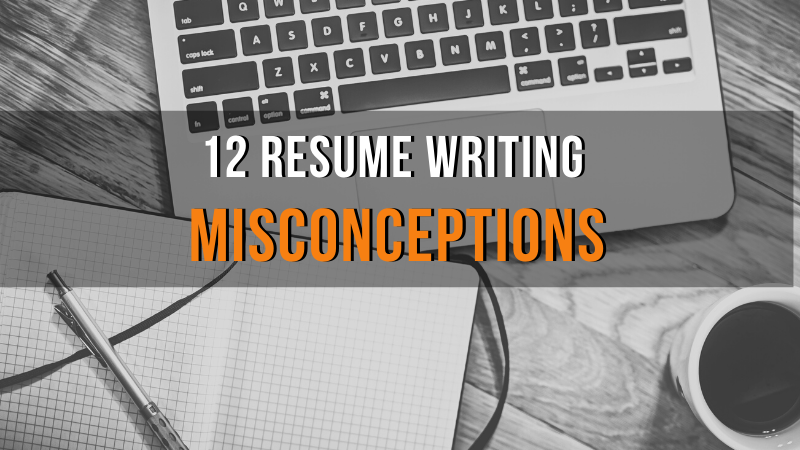
Executive job seekers often want to know what are the benefits and features they will experience if they have their resume done by a professional or should they do the resume themselves. The decision is a different one to be made for each person. But here is a list of misconceptions made by job seekers that can at least help you know what an executive resume is not or should not have:
12 Misconceptions of Writing an Effective Resume
Myth# 1: Executive resume summaries are the same as objectives.
Objectives only state what you want. Summaries outline how what you offer can meet the needs of the prospective employer. Simply put: nobody really cares what you want only.
Myth #2: Your executive resume needs charts and graphs to be impressive.
While I put charts and graphs in executive resumes for some of my clients, it is not the norm. Most clients can have achievements properly outlined in well-written content. Charts and graphs are often not digested by applicant tracking systems (ATS).
Myth #3: Everyone should be able to write their own executive resume.
Would you be your own lawyer? Try to sell your own house? While there are some people who can, for the majority of us, it is best to hire a professional to handle these matters.
Myth #4: Stuffing keywords into your executive resume gets through the ATS.
While this may actually work, when the recruiter reads your keyword stuffed resume, they will think you are spending more time trying to game the system versus outlining why you are qualified.
Myth #5: Every company uses ATS systems.
Every company does not use an ATS, but most do in some way. Having your resume keyword optimized is as essential as me having my coffee in the morning. You just would not want to see me without it.
Myth #6: Put all of your experience on your resume and show everything you ever did.
As a general rule, I do not go back more than 15 years. Even if what you did 25 years ago is applicable to what you are targeting today, no company will hire you for what you did 25 years ago. I believe, in most cases, putting 20+ years experience on your resume only dates you and does not really help your candidacy.
Myth #7: Follow a page rule: one page or two pages…no more.
Know that as long as you make the resume, one page resumes included, it is never guaranteed that the reader will read it. Keep your audience interested in 5-10 second increments to keep the scrolling and reading. If that is one page, so be it. If that is three pages, ok.
Myth #8: A great resume is the magic elixir to landing a job.
A great resume with an excellent job search plan, robust network, superb follow up skills and an amazing attitude land you a job. The most fabulous resume alone will not get you a job.
Myth #9: Stretch your dates to reduce or eliminate your employment gaps — no one will find out.
You can find out what your neighbor ate for dinner last night on the internet. You don’t think today’s background check technology can find out that you are fudging dates. Yes, they may not find out…but they also may find out. Don’t do it.
Myth #10: Put your references at the bottom of your resume.
Put your references on a well-crafted reference sheet. And don’t put :”references available upon request” at the bottom either. It is implied.
Myth #11: Use the same resume for all of your job applications and submissions.
Customize each submission showing how you meet the needs of the job description. One size does not fit all.
Myth #12: My old resume will work just fine.
The same way your shoulder padded jacket or skinny tie will work at the company party this weekend. Go for it.
Written by Lisa Rangel, Executive Resume Writer




